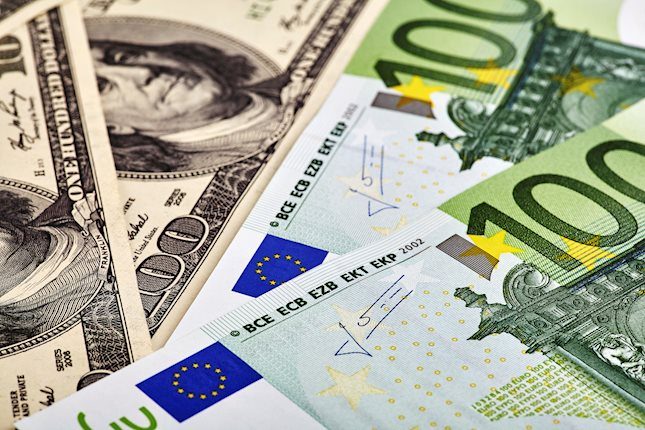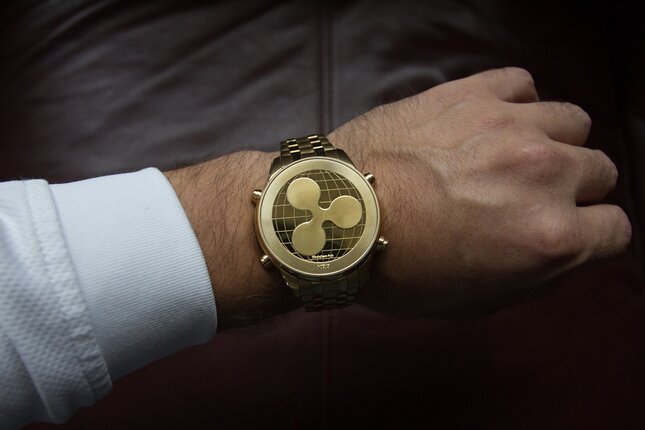- Indian Rupee edges lower on the modest recovery of the US Dollar.
- The Indian economy is forecast to expand by 7.3% in the current fiscal year.
- The flash US Gross Domestic Product growth numbers (Q4) are due later on Thursday.
Indian Rupee (INR) loses ground on Thursday amid renewed US Dollar (USD) demand. According to the National Statistical Office’s first advance estimates of national income released in early January, the Indian economy is expected to expand at 7.3% in the current fiscal year, exceeding even experts' most optimistic expectations. Nonetheless, concerns about rising inflation and higher crude oil prices due to the ongoing geopolitical tensions in the Middle East might cap the INR’s upside in the near term.
Investors will take more cues from the US economic data that could further impact rate-cut expectations in the United States. The preliminary US Gross Domestic Product Annualized (Q4) will be released on Thursday, which is estimated to expand by 2.0%.
Indian markets will be closed on Friday for Republic Day. Attention will shift to the release of the US Core Personal Consumption Expenditures Price Index (Core PCE) for December. Additionally, India’s interim budget for fiscal year 2024–25 (FY25) will be published on February 1.
Daily Digest Market Movers: Indian Rupee remains sensitive to higher inflation and oil prices
- Foreign investors have sold roughly $2 billion worth of Indian equities in January, following net buys of $7.9 billion the previous month.
- Reserve Bank of India Governor Shaktikanta Das said last week that monetary policy must remain actively disinflationary, despite the recent sharp fall in core inflation.
- India's core inflation dropped to its lowest level in four years in December, raising the possibility that the rate-setting panel may adjust its position to "neutral" next month.
- The RBI is expected to target a narrower FY25 fiscal deficit of 5.3%–5.6% of GDP versus 5.9% in FY24.
- The US S&P Global Composite PMI for January signaled the fastest rise in business activity since June 2023, arriving at 52.3 versus 50.9 prior, beating the market expectations.
- The US S&P Global Services PMI rose to 52.9 in January from 51.4 in December. The manufacturing figure grew to 50.3 from 47.9 in the previous reading.
- Former St. Louis Federal Reserve (Fed) President James Bullard said on Tuesday that the central bank may begin cutting interest rates before inflation hits 2%, potentially as soon as March.
Technical Analysis: Indian Rupee remains confined in the 82.80–83.40 region
Indian Rupee weakens on the day. The USD/INR pair has remained stuck within the 82.80–83.40 trading range since September 2023. USD/INR resumes its upside as the pair holds above the key 100-period Exponential Moving Average (EMA) on the daily chart. However, the 14-day Relative Strength Index (RSI) hovers around the 50.0 midline, suggesting the directionlessness of the pair for the time being.
The first upside barrier for USD/INR is seen at 83.40 (the upper boundary of the trading range). The next hurdle will emerge at 83.47 (2023 high) and 84.00 (round figure). On the other hand, the initial support level is seen at the 83.00 psychological mark. The next contention level is located at 82.80 (lower limit of the trading range, low of January 15) and 82.60 (low of August 11).
US Dollar price today
The table below shows the percentage change of US Dollar (USD) against listed major currencies today. US Dollar was the strongest against the Swiss Franc.
| USD | EUR | GBP | CAD | AUD | JPY | NZD | CHF | |
| USD | -0.03% | 0.00% | -0.06% | -0.07% | 0.12% | -0.02% | 0.13% | |
| EUR | 0.03% | 0.05% | -0.03% | -0.04% | 0.15% | 0.00% | 0.17% | |
| GBP | 0.01% | -0.02% | -0.05% | -0.06% | 0.13% | -0.03% | 0.15% | |
| CAD | 0.05% | 0.03% | 0.05% | -0.03% | 0.17% | 0.01% | 0.18% | |
| AUD | 0.09% | 0.04% | 0.08% | 0.01% | 0.20% | 0.04% | 0.21% | |
| JPY | -0.11% | -0.14% | -0.10% | -0.17% | -0.22% | -0.17% | 0.00% | |
| NZD | 0.07% | 0.01% | 0.03% | -0.03% | -0.04% | 0.14% | 0.14% | |
| CHF | -0.13% | -0.17% | -0.13% | -0.19% | -0.21% | -0.01% | -0.15% |
The heat map shows percentage changes of major currencies against each other. The base currency is picked from the left column, while the quote currency is picked from the top row. For example, if you pick the Euro from the left column and move along the horizontal line to the Japanese Yen, the percentage change displayed in the box will represent EUR (base)/JPY (quote).
GDP FAQs
What is GDP and how is it recorded?
A country’s Gross Domestic Product (GDP) measures the rate of growth of its economy over a given period of time, usually a quarter. The most reliable figures are those that compare GDP to the previous quarter e.g Q2 of 2023 vs Q1 of 2023, or to the same period in the previous year, e.g Q2 of 2023 vs Q2 of 2022.
Annualized quarterly GDP figures extrapolate the growth rate of the quarter as if it were constant for the rest of the year. These can be misleading, however, if temporary shocks impact growth in one quarter but are unlikely to last all year – such as happened in the first quarter of 2020 at the outbreak of the covid pandemic, when growth plummeted.
How does GDP influence currencies?
A higher GDP result is generally positive for a nation’s currency as it reflects a growing economy, which is more likely to produce goods and services that can be exported, as well as attracting higher foreign investment. By the same token, when GDP falls it is usually negative for the currency.
When an economy grows people tend to spend more, which leads to inflation. The country’s central bank then has to put up interest rates to combat the inflation with the side effect of attracting more capital inflows from global investors, thus helping the local currency appreciate.
How does higher GDP impact the price of Gold?
When an economy grows and GDP is rising, people tend to spend more which leads to inflation. The country’s central bank then has to put up interest rates to combat the inflation. Higher interest rates are negative for Gold because they increase the opportunity-cost of holding Gold versus placing the money in a cash deposit account. Therefore, a higher GDP growth rate is usually a bearish factor for Gold price.
Information on these pages contains forward-looking statements that involve risks and uncertainties. Markets and instruments profiled on this page are for informational purposes only and should not in any way come across as a recommendation to buy or sell in these assets. You should do your own thorough research before making any investment decisions. FXStreet does not in any way guarantee that this information is free from mistakes, errors, or material misstatements. It also does not guarantee that this information is of a timely nature. Investing in Open Markets involves a great deal of risk, including the loss of all or a portion of your investment, as well as emotional distress. All risks, losses and costs associated with investing, including total loss of principal, are your responsibility. The views and opinions expressed in this article are those of the authors and do not necessarily reflect the official policy or position of FXStreet nor its advertisers. The author will not be held responsible for information that is found at the end of links posted on this page.
If not otherwise explicitly mentioned in the body of the article, at the time of writing, the author has no position in any stock mentioned in this article and no business relationship with any company mentioned. The author has not received compensation for writing this article, other than from FXStreet.
FXStreet and the author do not provide personalized recommendations. The author makes no representations as to the accuracy, completeness, or suitability of this information. FXStreet and the author will not be liable for any errors, omissions or any losses, injuries or damages arising from this information and its display or use. Errors and omissions excepted.
The author and FXStreet are not registered investment advisors and nothing in this article is intended to be investment advice.
Recommended content
Editors’ Picks

EUR/USD sits at yearly lows near 1.0550 ahead of EU GDP, US PPI data
EUR/USD is trading near 1.0550 in the European session on Thursday, sitting at the lowest level in a year. The Trump trades-driven relentless US Dollar buying and German political instability weigh on the pair. Traders await EU GDP data and US PPI report ahead of Fed Chair Powell's speech.

GBP/USD holds losses below 1.2700 on sustained US Dollar strength
GBP/USD is holding losses near multi-month lows below 1.2700 in European trading on Thursday. The pair remains vulnerable amid a broadly firmer US Dollar and softer risk tone even as BoE policymakers stick to a cautious stance on policy. Speeches from Powell and Bailey are eyed.

Gold price hits fresh two-month low as the post-election USD rally remains uninterrupted
Gold price drifts lower for the fifth consecutive day and drops to its lowest level since September 19, around the $2,554-2,553 region heading into the European session on Thursday. The commodity continues to be weighed down by an extension of the US Dollar's post-election rally to a fresh year-to-date.

XRP struggles near $0.7440, could still sustain rally after Robinhood listing
Ripple's XRP is trading near $0.6900, down nearly 3% on Wednesday, as declining open interest could extend its price correction. However, other on-chain metrics point to a long-term bullish setup.

Trump vs CPI
US CPI for October was exactly in line with expectations. The headline rate of CPI rose to 2.6% YoY from 2.4% YoY in September. The core rate remained steady at 3.3%. The detail of the report shows that the shelter index rose by 0.4% on the month, which accounted for 50% of the increase in all items on a monthly basis.

Best Forex Brokers with Low Spreads
VERIFIED Low spreads are crucial for reducing trading costs. Explore top Forex brokers offering competitive spreads and high leverage. Compare options for EUR/USD, GBP/USD, USD/JPY, and Gold.